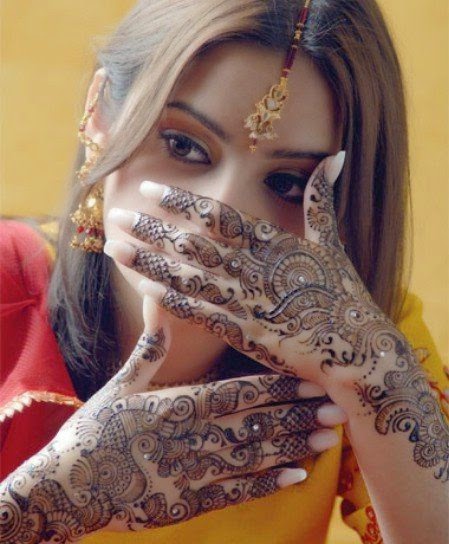Henna is a shrub native to the Mediterranean regions, whose leaves have been used as a hair conditioner and hair dye since the 7th millennium BC. When traveling to Morocco henna can be found in Morocco's souks and markets.
Some view Henna only as a bodily adornment or an alternative to a permanent tattoo, but in Morocco, the role of Henna transcends that of beauty. In harmony with the Berber‘s belief in Baraka (good luck), Henna worn on the body offers protection against illness, the evil eye, and brings joy.
Henna is a dye produced from the Henna plant. To create the dye, dried Henna leaves are ground into powder and mixed with water, tea, or lemon juice. The greener the powder, the more effective the paste will be to dye the skin red.
The many names and spellings for Henna (Mendhi, Al-Henna, and Mehandi)
make it difficult to pinpoint the exact origins of Henna. However, it
is fairly certain that it was developed in Northern Africa and later
introduced to Asia and India by North African travelers.
In Morocco, use of Henna can be traced to the first Berbers. Historically, Henna played an integral part of any major festival in Morocco and still does today. The three Moroccan celebrations where the presence of Henna is culturally critical are that of Id-al-Adha, circumcision, and during marriage festivities.
Id-al-Adha
is a three day Islamic holiday marking Abraham’s strong devotion to God
when he agreed to sacrifice his only son Ishmael. As the story goes,
God took pity on Abraham and gave him a sheep to sacrifice instead.
Consequentially, it is Moroccan tradition for the head of a household to
offer sheep at the culminating point of the Hajj festivities. During
the ceremony, the sheep, his sacrificer, and guests are decorated with
Henna.
Circumcision
is another unique celebration where all festival participants and the
honored guest are painted with Henna. This Islamic holiday began in the
19th and 20th century in the villages of Morocco.
While it is less common today, some communities still perform the
sacred, yet public rituals, where males between the ages of four and
fourteen loose their foreskin.
The best known tradition where Henna is present is the “Henna ritual”.
The night before her wedding ceremony, the bride and her negaffa (older
married women), gather together to share the secrets of marriage and
preparing her for her first marital relations. This is a rite of passage
and the bride is adorned with Henna; it marks her metamorphosis from a
young girl to a wife.
The Berber marriage ceremony
includes painting the hands and feet of the bride with the most
intricate patterns. Common Henna themes are floral or geometric designs,
often including the groom’s name discreetly inside the tattoo. As with
many Berber customs, the usage of Henna is thought to bring good health
and luck to the bride and protect her from harm.
Although the usage of Henna is a sacred one in Morocco,
you do not have to attend a festival or get married to enjoy its cool
and therapeutic effects. On a trip to any souk, you will likely be
approached by people with book patterns showing examples of Henna art.
Many people who opt for the Henna experience can choose from simple designs on a single body part, while others are more adventurous and choose designs running from the soles of their feet to their ankles or from hands to wrists.
Based on what part of Morocco
you are visiting, designs greatly vary. In the north, it is common to
see elaborate Henna styles displaying intertwining leaves of Islamic
art. In the south, be prepared to witness more bold and passionate
options where Henna is layered on the finger tips, across the palms of the hands and the entire bottom of feet.
Depending on the size and details of the pattern, applying Henna takes anywhere from twenty minutes to an hour.
When the work is complete, the artist will squeeze lime juice and sugar
over the paste because it will help release the color in the powder.
Once the paste falls off, most Henna appears reddish brown, however, everyone’s skin is different so the final shade may vary.
The usage of Henna symbolizes a mark of identity
and is an act of embracing beauty. Whatever your personal choice for
trying Henna, it is certain that it will be an exciting and cultural
experience.
Henna tattoos are available to tourists and Moroccans in Djemma el Fna Square in Marrakech, within all city souks and medinas as
well as within Berber villages. A recommendation from your guide is the
best way to find a local person who specialized in this intricate and
enchanting tattoo art.


















